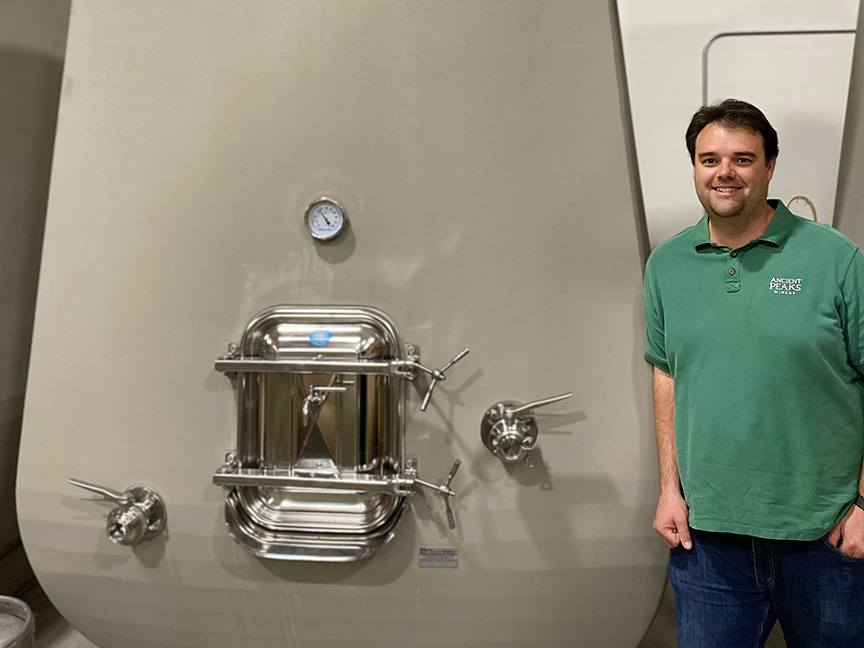Starting with the current 2021 harvest, we are taking the exciting step of incorporating concrete fermentation tanks into the Ancient Peaks winemaking program.
Indeed, three new Italian-made “Atlas” concrete tanks rolled up to the winery a month ago and are now awaiting their first use in the coming weeks. The Atlas tanks have a distinctive conical shape that is designed to facilitate gentle and consistent fermentations.
While stainless steel and oak barrels remain the predominant fermentation and storage vessels in the wine industry, concrete tanks have been used for centuries by European winemakers and have enjoyed a resurgence in recent years. This resurgence has been fueled by advancements in fabrication and materials that make concrete tanks a reliable alternative.
We caught up with Winemaker Stewart Cameron to learn more about these tanks—and what he expects from them at Ancient Peaks.
What is the capacity of these new concrete tanks?
They each hold up to 1,050 gallons, or around three tons of fruit. So we’ll make around 1,200 cases of concrete tank-fermented wine this year. We will use them for red wine fermentations. It remains to be seen if these wines will be bottled separately in some fashion, or if they’ll be used to add complexity to a larger blend.
What prompted you to invest in concrete tanks?
Our mindset here is one of continual iteration and improvement. We’re always learning and experimenting. We’ve seen other wineries have success with concrete, and it’s time to see if it can play a consistent role in the wines of Ancient Peaks. There are several top wineries in Bordeaux that are now loaded with modern concrete tanks. That alone tells me there’s something to this movement. But we’ll have to see for ourselves, with our own fruit. It’s no small investment, but we think it’s worth the gamble.
Our intent is to use these tanks for fermenting some of our Pearl Collection red wines, including Cabernet Sauvignon. The Pearl Collection is dedicated to small-batch, reserve-level wines—the best of the best from Ancient Peaks. We believe that concrete can help us continue to add to the complexity and expression of these wines.
What are the advantages of concrete?
There are definitely differences compared to stainless steel fermenters, and we are hoping to discover some advantages for certain wines. These concrete tanks have thick walls and are self-insulating when it comes to fruit and wine temperatures. The fruit comes in cool and will stay cool in these tanks, allowing for a longer cold soak. Then, after the wine heats up during fermentation, that warmth will be retained longer, which may help with texture and extraction.
So what’s your best case scenario?
The best case scenario is that these tanks help us produce wines that are aromatically expressive with great texture and body in the mouth—those are things we are always trying to incrementally enhance, and concrete may help us do that with some of our reds. I’m excited to put them to work and see how it all turns out.
